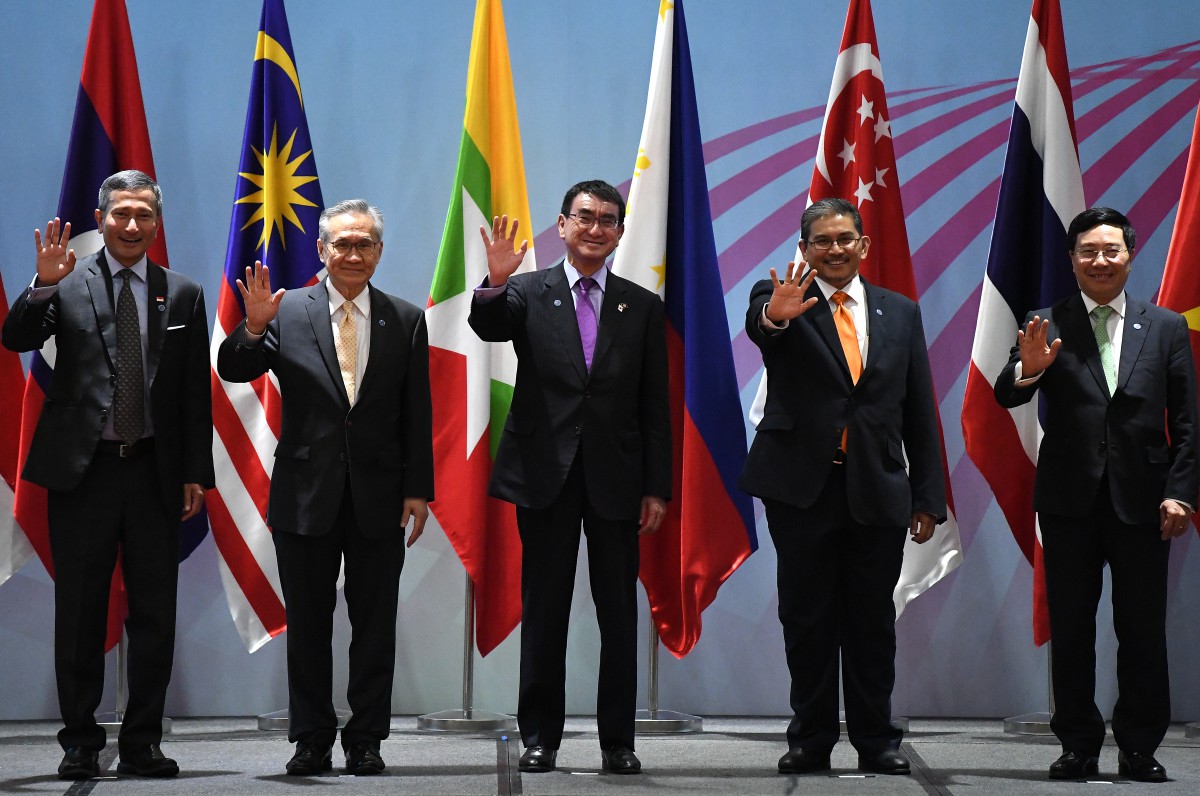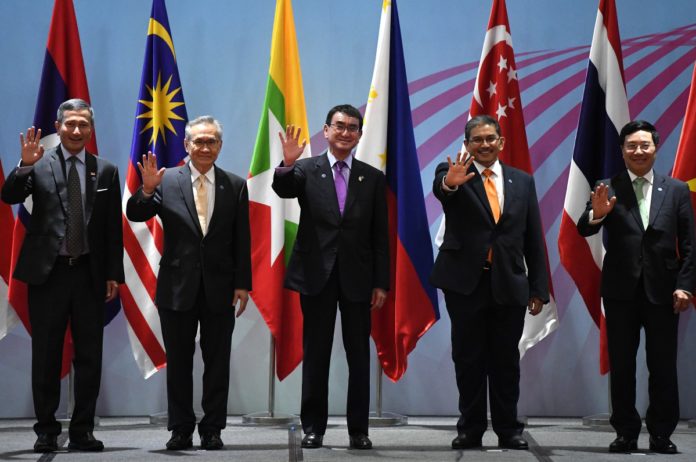SINGAPORE and Indonesia signed a US$10 billion bilateral swap agreement (BSA) in October 2018, allowing the two countries to assist each other through US dollar loans during financial stress.
The move signals a willingness by Association of Southeast Asian Nation (Asean) countries to play a bigger and more direct role in strengthening the region’s financial stability — but there is still much more to do.
The new BSA reflects increased unease among some Asean countries about the region’s existing financial cooperation arrangements. The most important is the Chiang Mai Initiative Multilateralisation (CMIM), a US$240 billion swap agreement among the Asean+3 countries (Asean plus China, Japan and South Korea).
The CMIM was implemented in 2010 when multilateralism was on the rise and a new international financial architecture was taking shape. The new order involved sharing greater responsibility for crisis management between regional organisations and global institutions.
SEE ALSO: Is Asean better off without the US?
In theory, the CMIM offers a strong and credible vehicle for crisis prevention and resolution. It provides a bigger pool of resources than pre-existing swap agreements between Asean and China, Japan and South Korea as well as the US$2 billion Asean Swap Agreement between Asean monetary authorities.
By consolidating the network of BSAs under the CMIM, decision-making during crises is streamlined. By subjecting 70 percent of emergency fund drawdown to IMF approval, the CMIM addresses the moral hazard problem associated with a multilateral fund.
Still, there are increasing concerns among Asean members about the CMIM’s effectiveness and whether it represents the right financing arrangement for the region. Specifically, there are concerns that the CMIM’s interests may not align with Asean’s.

(L-R) Singapore’s foreign minister Vivian Balakrishnan, Thailand’s foreign minister Don Ramudwinai, Japan’s foreign minister Taro Kono, Brunei’s second minister of foreign affairs and trade Erywan Yusof and Vietnam’s foreign minister Pham Binh Minh pose for photographs during the Association of Southeast Asian Nations (ASEAN) – Japan Ministerial Meeting in Singapore on August 2, 2018. Source: Mohd Rasfan/AFP
As China, Japan and South Korea provide 80 percent of the funding for the CMIM, they are the key decision makers and must approve any assistance to Asean countries in crisis. Also, Asean+3 can only approve the first 30 percent of the funds that a country in crisis needs. The remaining 70 percent is subject to the IMF approval process.
Asean countries have been uncomfortable with the CMIM’s decision-making structure for some time. They are exposed to shocks distinct from those affecting China, Japan and South Korea.
These East Asian economies are not as sensitive to the political and economic vulnerabilities that Asean countries face, and so their decisions may not adequately address the region’s needs. Asean needs a regional financial arrangement that is fully under its control.
SEE ALSO: Malaysia is the largest beneficiary of Chinese cash diplomacy
Many Asean countries also find the role of the IMF programme onerous, particularly for short-term financing to boost liquidity (as opposed to longer-term funding to correct fundamental economic imbalances).
There is still a strong stigma associated with IMF assistance due to its role during the Asian financial crisis, making it politically difficult for many Asean governments to request assistance from the IMF.
This stigma constitutes a major risk as an Asean country facing a temporary balance of payments shock may have no recourse to sizeable liquidity support until it is too late, since the bulk of the CMIM’s funds are linked to the IMF. The stigma has effectively reduced the CMIM to a largely non-operational role.
The past 10 years of volatile global capital flows demonstrates the CMIM’s shortcomings. Although no Asean country went into a crisis during this period, several of them needed emergency financial assistance during the so-called taper tantrum in 2013. They did not utilise the CMIM for this purpose, even though such assistance is a core aspect of its remit.

Singapore’s Prime Minister Lee Hsien Loong meets with Indonesia’s President Joko Widodo as Lee hosts an ASEAN working dinner in Singapore April 27, 2018. Source: Asean2018 Organising Committee/Handout Via Reuters
Instead, Asean countries are resorting to bilateral swap facilities with central banks within and outside Asia. As the Indonesia–Singapore BSA shows, they are also turning to fellow Asean countries for assistance. Such alternatives weaken the CMIM’s credibility and effectiveness as the region’s main financing mechanism.
Asean should rebuild its own crisis management arrangement as an additional financial safety net.
This could begin with a reconstructed and substantially strengthened Asean Swap Agreement (ASA) governed by representatives from Asean countries only. This would enable greater control over the speed and the outcome of the fund disbursement process.
Policy dialogue and surveillance efforts supporting the ASA can draw on the region’s existing economic consultation process and the Asean+3 Macroeconomic Resource Office’s (AMRO’s) surveillance work.
SEE ALSO: ASEAN business is not keeping up with digital transformation
The new ASA could be designed as a liquidity facility to primarily address liquidity shocks and be viewed as complementary to the CMIM. In the event of a liquidity shock, the ASA would provide the second line of defence after the country’s own reserves, with the CMIM forming the third line of defence.
Asean shouldering the initial funding responsibility in a crisis would greatly facilitate subsequent funding from the CMIM.
The current ASA fund of US$2 billion is inadequate. It should be at least US$50 billion. This is neither unrealistic nor infeasible. Compared with the pre-Asian financial crisis period when Asean countries had a mere US$164 billion in international reserves, they now have more than US$900 billion.
Asean has made enormous progress in growth and development and is now one of the world’s fastest-growing and most dynamic regions. Still, another financial crisis absent a strong and credible crisis prevention and resolution mechanism may derail that progress, making a new ASA an important priority.
Kim Song Tan is Professor of Economics at Singapore Management University. Manu Bhaskaran is CEO of Centennial Asia Advisors, a regional consultancy group.
This article is republished from East Asia Forum under a Creative Commons licence.





